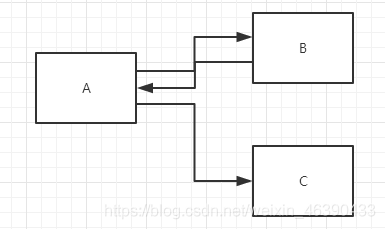HttpServlet中的 request & response
1. HTTP
1. 什么是HTTP
(超文本传输协议)是一个简单的请求-响应协议,它通常运行在TCP之上
- 文本:html,字符串,…
- 超文本:图片,音乐,视频,定位,地图.……
- 端口:80
- Https:安全的
1.2 两个时代
- http1.0
- HTTP/1.0:客户端可以与web服务器连接后,只能获得一个web资源,断开连接
- http2.0
- HTTP/1.1:客户端可以与web服务器连接后,可以获得多个web资源。
1.3 Http请求
客户端–->发请求(Request)–->服务器
百度的请求:
Request URL:https://www.baidu.com/ 请求地址
Request Method:GET get方法/post方法
Status Code:200 OK 状态码:200
Remote(远程) Address:14.215.177.39:443
Accept:text/html
Accept-Encoding:gzip, deflate, br
Accept-Language:zh-CN,zh;q=0.9 语言
Cache-Control:max-age=0
Connection:keep-alive
1.3.1 请求行
请求方式:Get,Post,HEAD,DELETE,PUT,TRACT.…
-
get:请求能够携带的参数比较少,大小有限制,会在浏览器的URL地址栏显示数据内容,不安全,但高效
-
post:请求能够携带的参数没有限制,大小没有限制,不会在浏览器的URL地址栏显示数据内容,安全,但不高效。
1.3.2 消息头
Accept:告诉浏览器,它所支持的数据类型
Accept-Encoding:支持哪种编码格式 GBK UTF-8 GB2312 ISO8859-1
Accept-Language:告诉浏览器,它的语言环境
Cache-Control:缓存控制
Connection:告诉浏览器,请求完成是断开还是保持连接
HOST:主机..../.
1.4 Http响应
服务器-->响应-->客户端
百度的响应:
Cache-Control:private 缓存控制
Connection:Keep-Alive 连接
Content-Encoding:gzip 编码
Content-Type:text/html 类型
1.4.1 响应体
Accept:告诉浏览器,它所支持的数据类型
Accept-Encoding:支持哪种编码格式 GBK UTF-8 GB2312 ISO8859-1
Accept-Language:告诉浏览器,它的语言环境
Cache-Control:缓存控制
Connection:告诉浏览器,请求完成是断开还是保持连接
HOST:主机..../.
Refresh:告诉客户端,多久刷新一次;
Location:让网页重新定位;
1.4.2 响应状态码(重点)
200:请求响应成功200
3xx:请求重定向·重定向:你重新到我给你新位置去;
4xx:找不到资源404·资源不存在;
5xx:服务器代码错误 500 502:网关错误
1.5 面试题(重点)
-
当你的浏览器中地址栏输入地址并回车的一瞬间到页面能够展示回来,经历了什么?
-
请你谈谈网站是如何进行访问的!
-
输入一个域名;回车
-
检查本机的 C:\Windows\System32\drivers\etc\hosts配置文件下有没有这个域名映射;
2.1 有:直接返回对应的ip地址,这个地址中,有我们需要访问的web程序,可以直接访问
2.2没有:去DNS服务器找,找到的话就返回,找不到就返回找不到;

1.6 HTTP一篇就够了,很详细
2. ServletContext
一个web容器启动时,会为创建一个对应的ServletContext对象,它代表了当前web应用;
2.1 共享数据 getServletContext()
我们在一个Servlet中通过servlerContext对象保存(set)的数据,可以在另一个servlet通过servlerContext对象get到
public class HelloServlet extends HttpServlet {
@Override
protected void doGet(HttpServletRequest req, HttpServletResponse resp) throws ServletException, IOException {
//this.getInitParameter(); 获取初始化参数
//this.getServletConfig(); 获取Servlet配置
//this.getServletContext(); 获取Servlet上下文
ServletContext servletContext = this.getServletContext();
String username = "admin";
servletContext.setAttribute("username",username);//将一个数据保存到了ServletContext中
//void setAttribute(String var1, Object var2);
}
}
public class GetServlet extends HttpServlet {
@Override
protected void doGet(HttpServletRequest req, HttpServletResponse resp) throws ServletException, IOException {
ServletContext context = this.getServletContext();
String username = (String)context.getAttribute("username");
//设置响应格式,否则中文默认GBK格式在浏览器上显示会乱码
resp.setContentType("text/html");
resp.setCharacterEncoding("utf-8");
resp.getWriter().print("名字"+username);
}
@Override
protected void doPost(HttpServletRequest req, HttpServletResponse resp) throws ServletException, IOException {
doGet(req, resp);
}
}
2.2 获取初始化参数 getInitParameter
- 在web.xml中配置一些web应用初始化参数
<!--配置一些web应用初始化参数-->
<context-param>
<param-name>url</param-name>
<param-value>jdbc:mysql://localhost:3306/mybatis</param-value>
</context-param>
- doGet中获取url
protected void doGet(HttpServletRequest req, HttpServletResponse resp) throws ServletException, IOException {
ServletContext context = this.getServletContext();
String url = context.getInitParameter("url");
resp.getWriter().print(url);
}
2.3 请求转发 getRequestDispatcher
@Override
protected void doGet(HttpServletRequest req, HttpServletResponse resp) throws ServletException, IOException {
ServletContext context = this.getServletContext();
System.out.println("进入了sd4");
RequestDispatcher requestDispatcher = context.getRequestDispatcher("/gp");//转发的请求路径
requestDispatcher.forward(req,resp);//调用forward实现请求转发
//合并写 context.getRequestDispatcher("/gp").forward(req,resp);
}
2.4 读取资源文件
- 在resources目录下新建db.properties
username=root
password=123456
- 思路:需要一个文件流 + Properties类
public class ServletDemo05 extends HttpServlet {
@Override
protected void doGet(HttpServletRequest req, HttpServletResponse resp) throws ServletException, IOException {
InputStream is = this.getServletContext().getResourceAsStream("/WEB-INF/classes/com/kuang/servlet/aa.properties");
Properties prop = new Properties();
prop.load(is);
String user = prop.getProperty("username");
String pwd = prop.getProperty("password");
resp.getWriter().print(user+":"+pwd);
}
@Override
protected void doPost(HttpServletRequest req, HttpServletResponse resp) throws ServletException, IOException {
doGet(req, resp);
}
}
3. HttpServletResponse
web服务器接收到客户端的http请求,针对这个请求,分别创建一个代表请求的HttpServletRequest对象,代表响应的一个HttpServletResponse;
-
如果要获取客户端请求过来的参数:找HttpServletRequest
-
如果要给客户端响应一些信息:找HttpServletResponse
3.1 下载文件
思路
要获取下载文件的路径
下载的文件名是啥?
设置想办法让浏览器能够支持下载我们需要的东西
获取下载文件的输入流
创建缓冲区
获取OutputStream对象
将FileOutputStream流写入到buffer缓冲区
使用OutputStream将缓冲区中的数据输出到客户端!
@Override
protected void doGet(HttpServletRequest req, HttpServletResponse resp) throws ServletException, IOException {
// 1. 要获取下载文件的路径
String realPath = "E:\javacode\javaweb-file\download\target\classes\ujs.jpg";
//System.out.println("下载文件的路径:"+realPath);
// 2. 下载的文件名是啥?
String fileName = realPath.substring(realPath.lastIndexOf("\\") + 1);
// 3. 设置想办法让浏览器能够支持(Content-Disposition)下载我们需要的东西,中文文件名URLEncoder.encode编码,否则有可能乱码
resp.setHeader("Content-Disposition","attachment;filename="+URLEncoder.encode(fileName,"UTF-8"));
// 4. 获取下载文件的输入流
FileInputStream in = new FileInputStream(realPath);
// 5. 创建缓冲区
int len = 0;
byte[] buffer = new byte[1024];
// 6. 获取OutputStream对象
ServletOutputStream out = resp.getOutputStream();
// 7. 将FileOutputStream流写入到buffer缓冲区,使用OutputStream将缓冲区中的数据输出到客户端!
while ((len=in.read(buffer))>0){
out.write(buffer,0,len);
}
in.close();
out.close();
}
3.2 验证码功能
- 前端实现
- 后端实现,需要用到 Java 的图片类,生产一个图片
public class ImageServlet extends HttpServlet {
@Override
protected void doGet(HttpServletRequest req, HttpServletResponse resp) throws ServletException, IOException {
//如何让浏览器3秒自动刷新一次;
resp.setHeader("refresh","3");
//在内存中创建一个图片
BufferedImage image = new BufferedImage(80,20,BufferedImage.TYPE_INT_RGB);
//得到图片
Graphics2D g = (Graphics2D) image.getGraphics(); //笔
//设置图片的背景颜色
g.setColor(Color.white);
g.fillRect(0,0,80,20);
//给图片写数据
g.setColor(Color.BLUE);
g.setFont(new Font(null,Font.BOLD,20));
g.drawString(makeNum(),0,20);
//告诉浏览器,这个请求用图片的方式打开
resp.setContentType("image/jpeg");
//网站存在缓存,不让浏览器缓存
resp.setDateHeader("expires",-1);
resp.setHeader("Cache-Control","no-cache");
resp.setHeader("Pragma","no-cache");
//把图片写给浏览器
ImageIO.write(image,"jpg", resp.getOutputStream());
}
//生成随机数
private String makeNum(){
Random random = new Random();
String num = random.nextInt(9999999) + "";
StringBuffer sb = new StringBuffer();
for (int i = 0; i < 7-num.length() ; i++) {
sb.append("0");
}
num = sb.toString() + num;
return num;
}
@Override
protected void doPost(HttpServletRequest req, HttpServletResponse resp) throws ServletException, IOException {
doGet(req, resp);
}
}
3.3 实现重定向
一个web资源(B)收到客户端A请求后,B他会通知A客户端去访问另外一个web资源C,这个过程叫重定向
常见场景:用户登录

参数为:项目名/地址名
resp.sendRedirect("/ServletHttpResponse/getImage");
<%--action:这里提交的路径,需要寻找到项目的路径--%>
<%--${pageContext.request.contextPath}代表当前的项目--%>
<form action="${pageContext.request.contextPath}/redirect" method="get">
username <input name="username" type="text"> <br>
password: <input name="password" type="password"> <br>
<input type="submit">
</form>
protected void doGet(HttpServletRequest req, HttpServletResponse resp) throws ServletException, IOException {
String username = req.getParameter("username");
String password = req.getParameter("password");
System.out.println(username +": "+password);
//参数为:项目名/地址名
resp.sendRedirect("/ServletHttpResponse/success.jsp");
}
4. HttpServletRequest
HttpServletRequest代表客户端的请求,用户通过Http协议访问服务器,HTTP请求中的所有信息会被封装到HttpServletRequest,通过这个HttpServletRequest的方法,获得客户端的所有信息;
常用两个方法

request获取请求的数据,并请求转发
@Override
protected void doGet(HttpServletRequest req, HttpServletResponse resp) throws ServletException, IOException {
req.setCharacterEncoding("utf-8");
resp.setCharacterEncoding("utf-8");
String username = req.getParameter("username");
String password = req.getParameter("password");
String[] hobbys = req.getParameterValues("hobbys");
System.out.println("=============================");
//后台接收中文乱码问题
System.out.println(username);
System.out.println(password);
System.out.println(Arrays.toString(hobbys));
System.out.println("=============================");
System.out.println(req.getContextPath());
//通过请求转发
//这里的 / 代表当前的web应用
req.getRequestDispatcher("/success.jsp").forward(req,resp);
}
<div>
<form action="${pageContext.request.contextPath}/login" method="post">
用户名:<input type="text" name="username"> <br>
密码: <input type="password" name="password"> <br>
爱好:
<input type="checkbox" name="hobby" value="coding">编程
<input type="checkbox" name="hobby" value="game">游戏
<input type="checkbox" name="hobby" value="film">看电影
<input type="checkbox" name="hobby" value="running">跑步
<br>
<input type="submit">
</form>
</div>
5. 面试题:请你聊聊重定向和转发的区别?
-
相同点: 页面都会实现跳转
-
不同点
- 请求转发的时候,url不会产生变化 状态码:307
- 重定向时候,url地址栏会发生变化 状态码:302

